Eastern Bluebirds Near Cambridge In Ontario
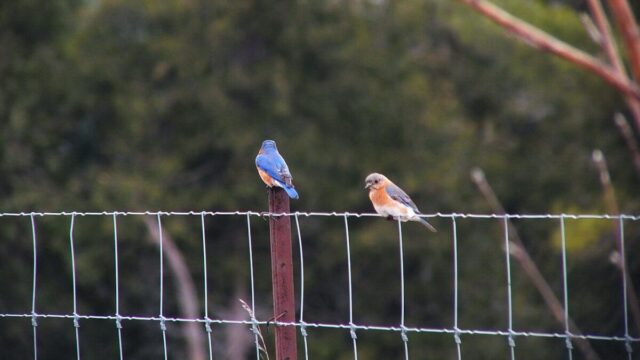
Bob and I took a drive down towards Cambridge to see if we could locate any of the Sandhill Cranes reported to be nesting in the area of Grass Lake. Our first observation over the marshy lake revealed nothing to us of the Cranes’ whereabouts, but a fellow birdwatcher pointed us a little further down the dirt road where Eastern Bluebirds were preparing to nest. They were going to have to stand in for the Cranes until a little while later.
When we arrived, there was no doubting that we were in the right location because other photographers were already poised with their lenses trained on the near end of the open upland. Right away, we spotted a female Eastern Bluebird surveying the area and keeping an eye on some Tree Swallows that were investigating a couple of birdhouses.
A farmer who lives adjacent to the gently sloped clearing had generously erected two birdhouses along that stretch of the road, and further over, a series of other nest boxes dotted the hillside next to his farm. Bluebirds are cavity nesters, and as we looked on, this female seemed to be vying for occupation of one of the birdhouses while trying to discourage the other contenders.
There, near Grass Lake, but also seen elsewhere when birdhouses are provided, there is competition for the nest boxes. These Tree Swallows were quick to put the run on the Bluebirds. Although other Tree Swallows were in the area, they, as a species, will not nest within 10 feet of one another. Hopefully, the Eastern Bluebirds will succeed in claiming one of the nest boxes.
The biggest challenge facing Bluebirds would be competition for the birdhouse from House Sparrows and European Starlings. The introduction of these species has been one of the most critical factors in the decline of Eastern Bluebird populations because of that competition for nest sites. That and the switch to metal fence posts from wooden has impacted nesting Bluebirds because of the lack of nesting cavities. Rotting fence posts are popular with those birds that excavate cavities.
The habitat preferred by Eastern Bluebirds is open and sparse woodlands scattered with trees and shrubs, burntland with old standing trees, and orchards, farmland and meadows with sparse ground cover. As long as there are suitable nesting cavities in the vicinity, Bluebirds would find those environments suitable. Cavity holes previously excavated by another species and left abandoned make for ideal nest holes, although Bluebirds will readily accept nest boxes.
The nest boxes provided by the farmer were ideally situated for the Eastern Bluebirds and Tree Swallows alike because the meadow will abound with insects and other invertebrates so will provide an excellent hunting ground. Bluebirds tend to swoop down to the ground from a perch and pounce on their prey nabbing such things as grasshoppers, spiders, crickets, centipedes, snails or katydids. When insects are scarce, Bluebirds will also consume small fruits and berries although these tend to be part of their diet in late summer when feeding their young.
As this Eastern Bluebird looked out over the brown weathered grass of the clearing, I wondered if it was giving thought to flying further afield. Glass Lake is a mere .25 mile (.4 km) away as the crow flies, and being near a source of water is another important consideration when Bluebirds are selecting a nesting site.
During breeding season, Eastern Bluebirds are very territorial and will aggressively defend their feeding and nesting area, but they are just as apt to continue that defensive mode into the winter. Bluebirds will, if provoked, attack other species that are competing for nesting holes, so the Tree Swallows had better look out.
Breeding season for Eastern Bluebirds occurs in the spring and summer months anytime between February and September, but most breeding takes place in April. It is the male Bluebird who seeks to attract a female by bringing nesting material to a suitable nest site and subsequently perching atop the cavity and waving his wings. This courting display usually occurs around the time that maple trees are tapped in the sugar bush.
Eastern Bluebirds are partial migrants. Northerly populations winter primarily in central and southern United States, although in recent years, because of global warming, they have been overwintering in areas of Carolinian forest inland from Lakes Erie and Ontario. Southerly populations usually remain in their breeding areas year round. Eastern Bluebird populations are found across eastern North America and into Central America from southern Canada into Nicaragua.
This male Eastern Bluebird seems to be in a standoff with the Tree Swallow. Bob and I were so happy that the male Bluebird showed up on the scene because for the first while, it was only the female that remained in the vicinity of the nest boxes. Despite the grey brooding sky that afternoon, occasional gaps in the cloud cover allowed sufficient sunlight to brighten the plumage of these spectacularly feathered birds. Males often look greyish-brown from a distance when there is a lack of light.
The sight of a male Eastern Bluebird in breeding plumage is one of those cherished moments that is a highlight of the spring season. The vivid deep blue plumage of the back and head make it one of the most beautiful backyard birds although I have to say that I have never seen one in my own backyard. Equally striking is the contrasting warm reddish brown of the breast and throat next to the crisp white belly. An Eastern Bluebird is a small thrush with a big, rounded head, plump body, long wings and short tail.
Eastern Bluebirds are very social birds, but I doubt that is why this female kept alighting on the wire fence in front of me. She certainly afforded a good opportunity to appreciate the subtle colouring of her plumage. The feathers have a distinct greyish tinge on the head and back, but she still exhibits the orangish-brown breast, neck and sides. Female bluebirds have an elegant look brought about by the striking blue colour accenting the wings and tail.
Bob and I spent about an hour or so photographing the Eastern Bluebirds before we returned to Grass Lake in the hollow just down the road. It was our first time catching sight of these beautiful birds and a sure sign that spring is here to stay. The pair would soon be constructing a small, bowl-shaped nest in one of the birdhouses where the female will lay four or five eggs. With any luck, all will survive and return to the same area another spring. We’ll be there to greet them!
Frame To Frame – Bob and Jean



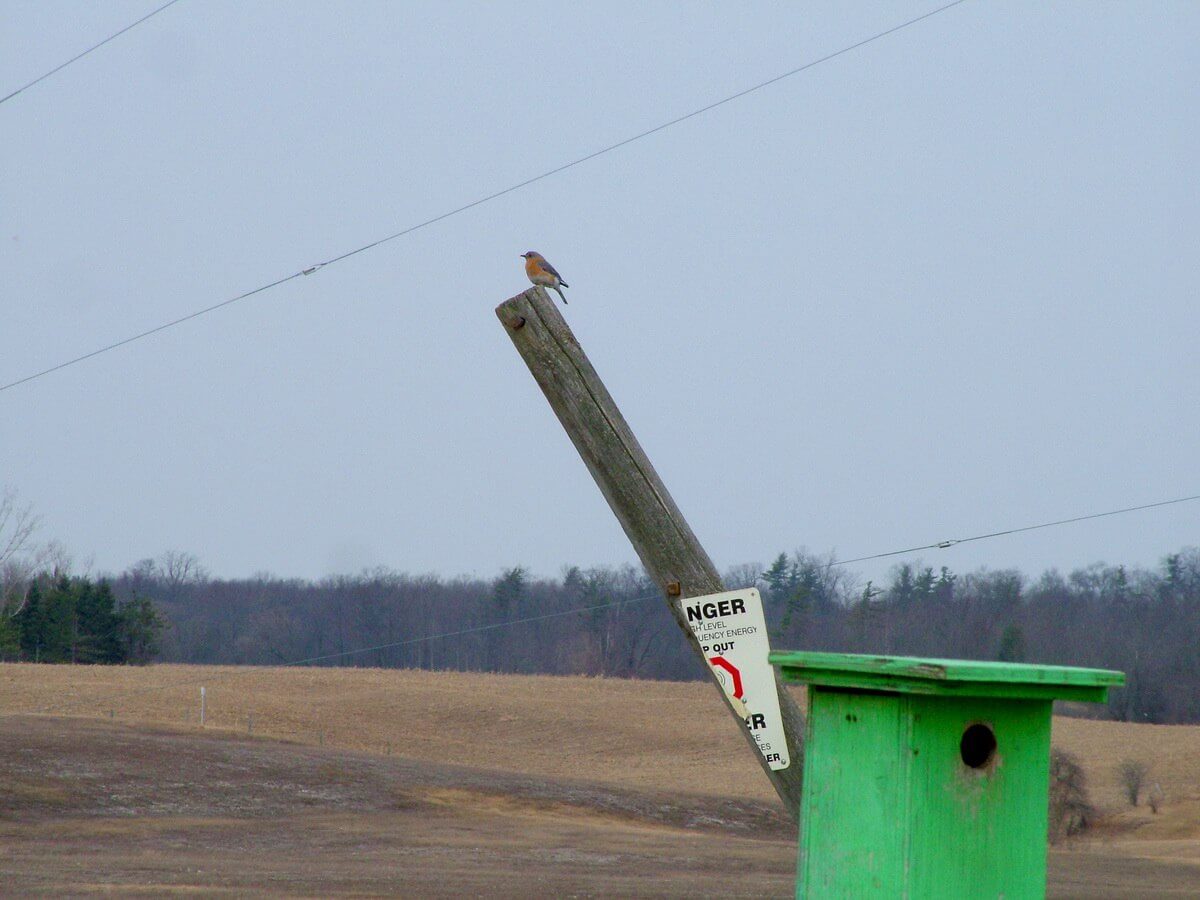



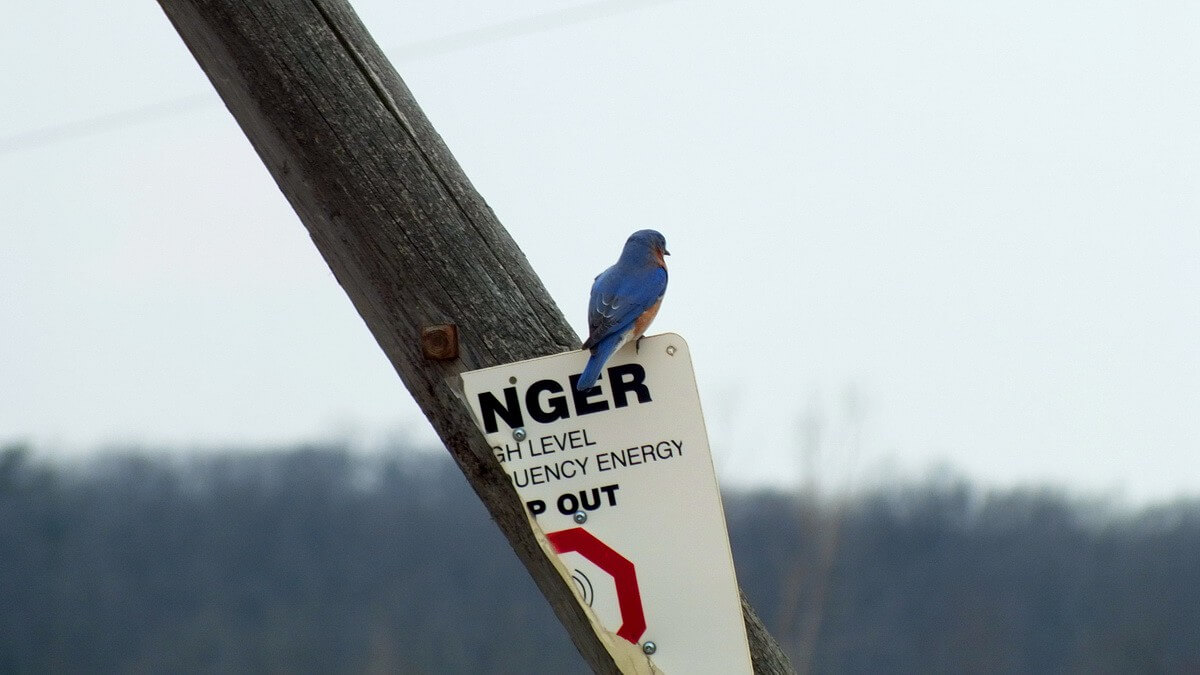
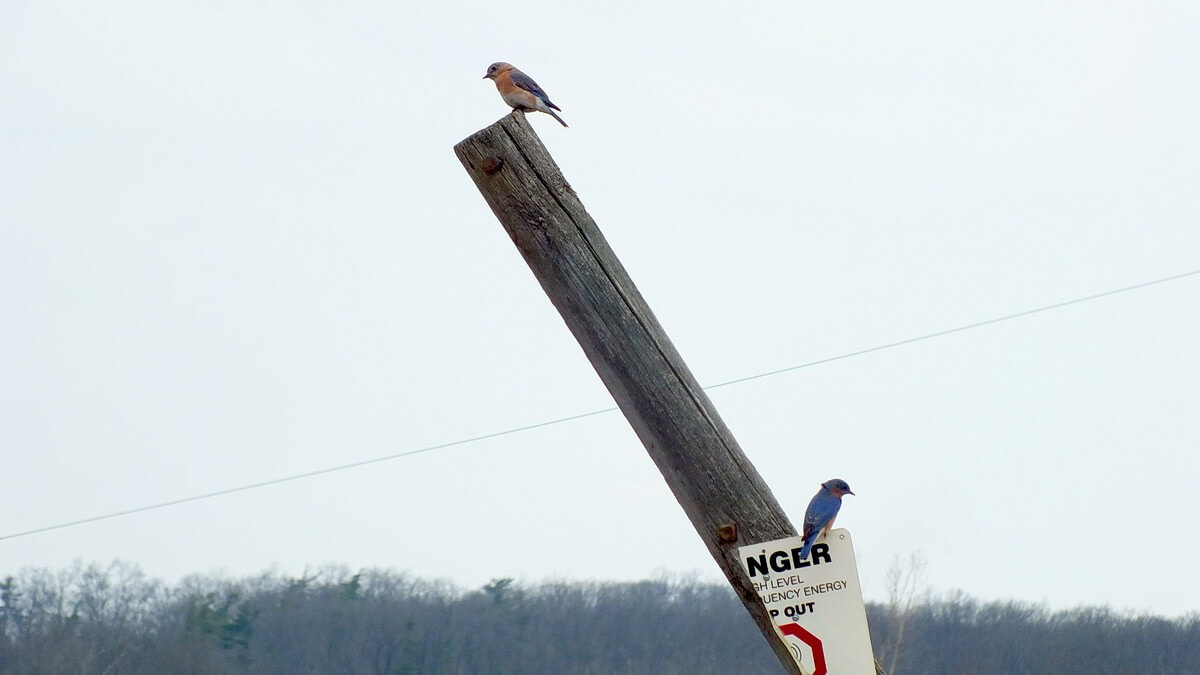
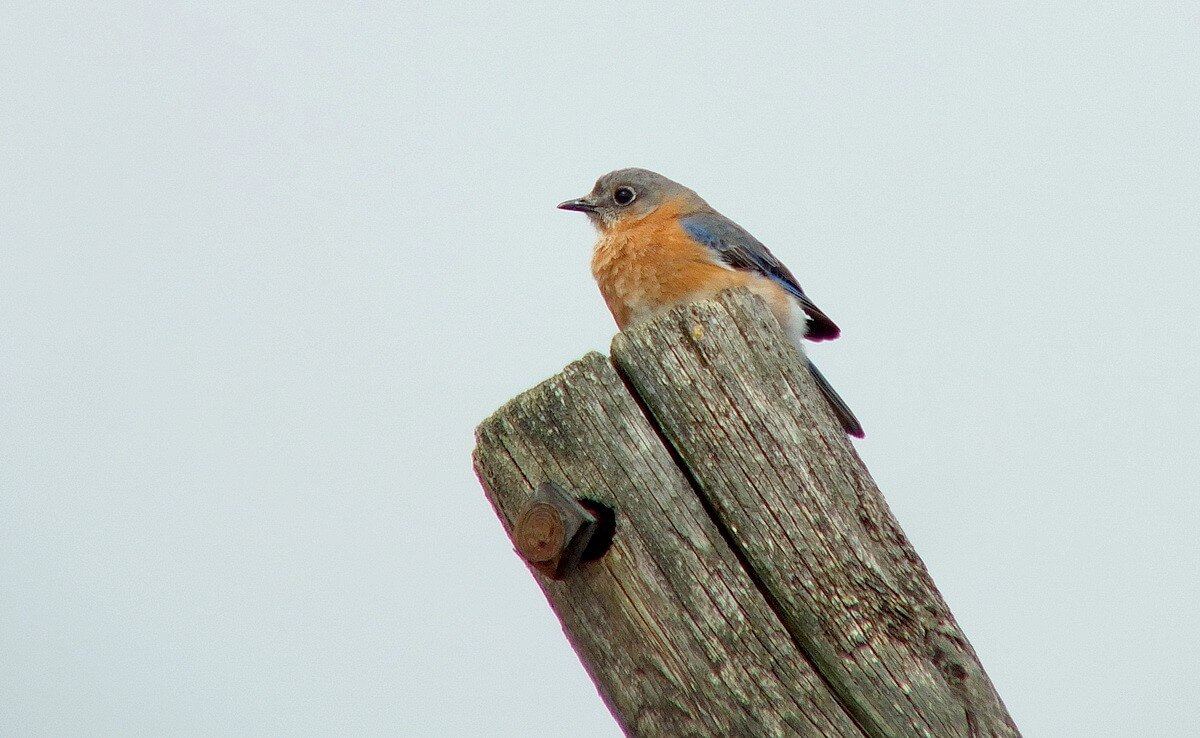
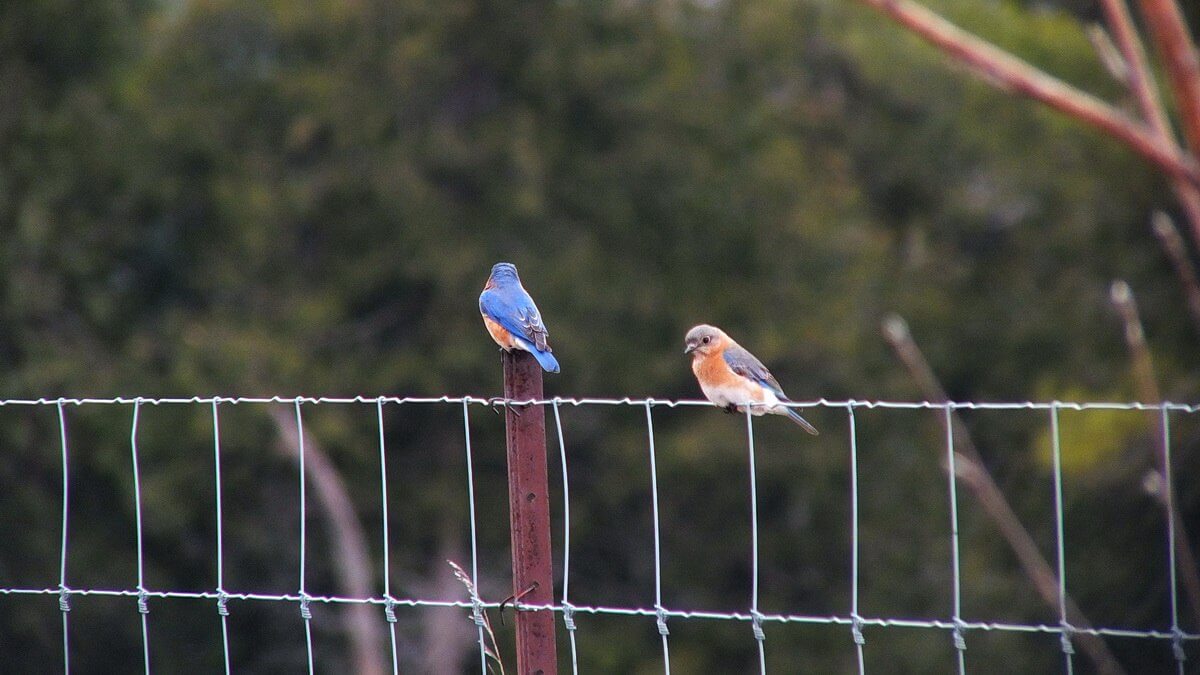

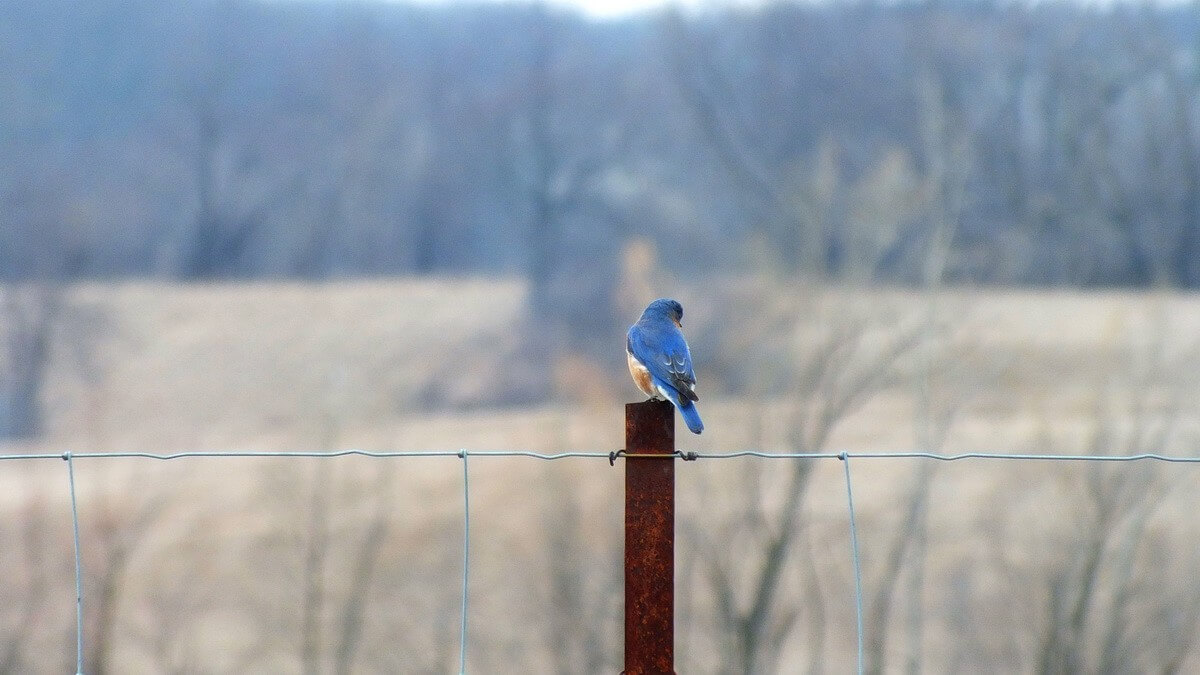
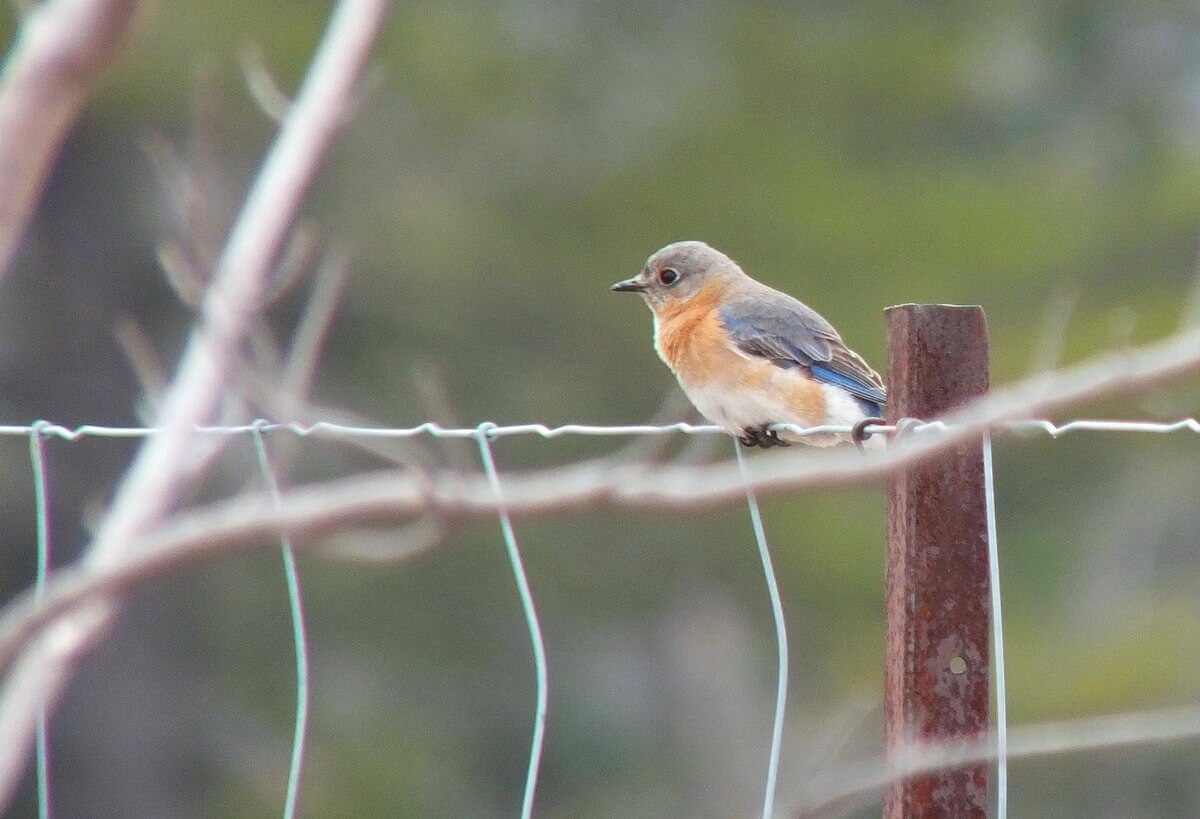
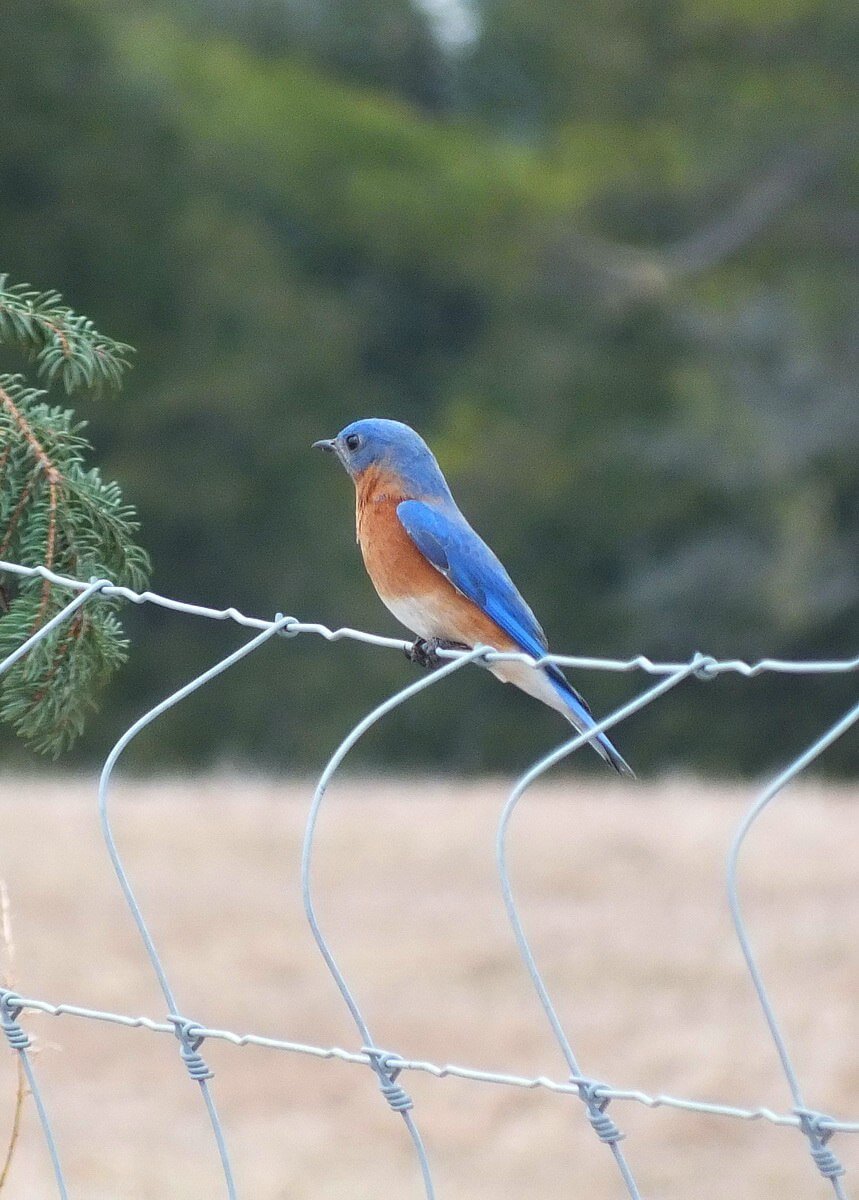
where is this exacttly
Thank you for reading our blog post and reaching out to us. Grass Lake is situated near Cambridge, Ontario. Here is a link to Google Maps, if that is of any help. https://www.google.com/maps/place/43%C2%B017'39.6%22N+80%C2%B020'58.9%22W/@43.2943363,-80.3518849,17z/data=!3m1!4b1!4m5!3m4!1s0x0:0x1fd114795dd015d5!8m2!3d43.2943363!4d-80.3496909